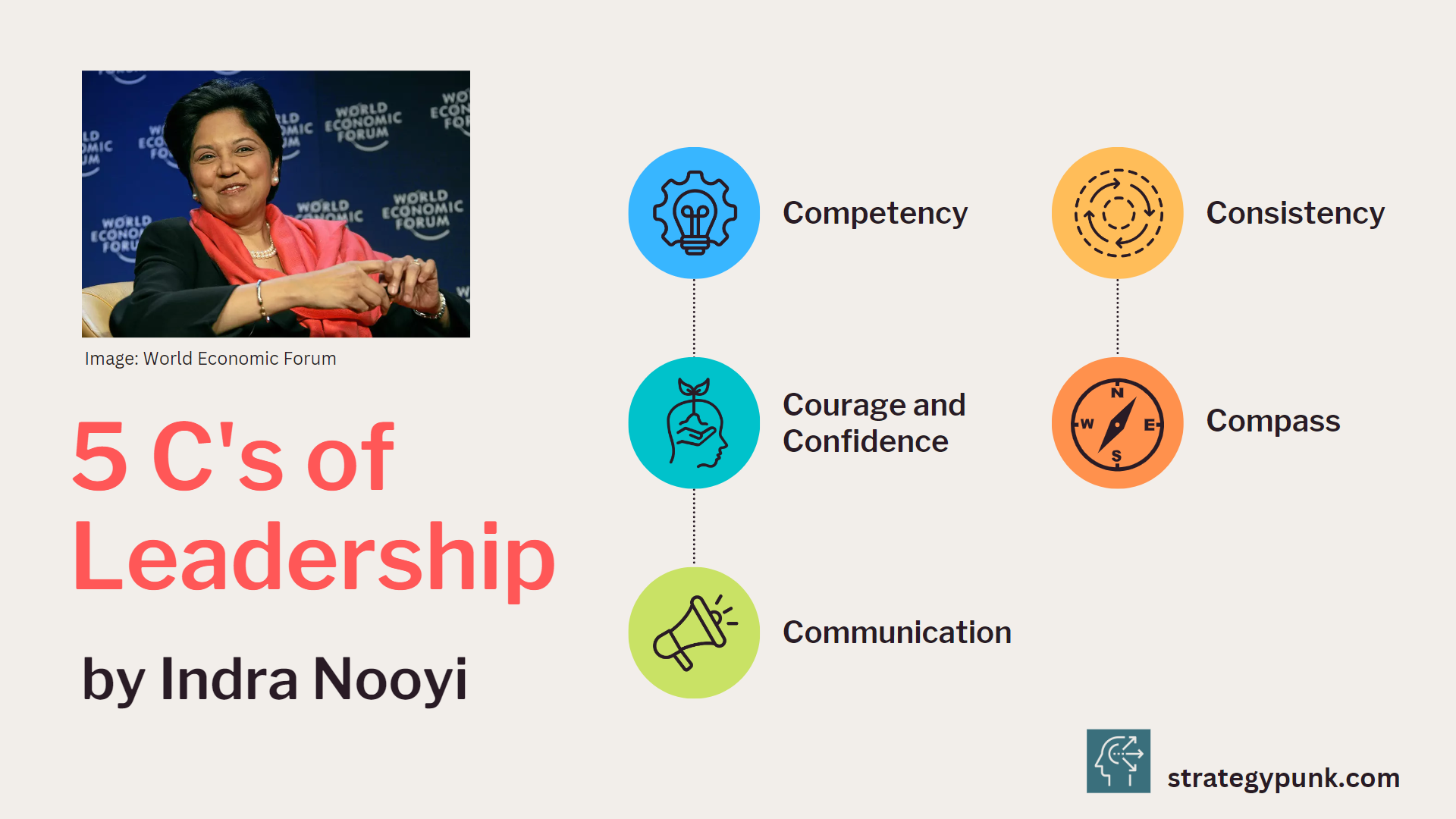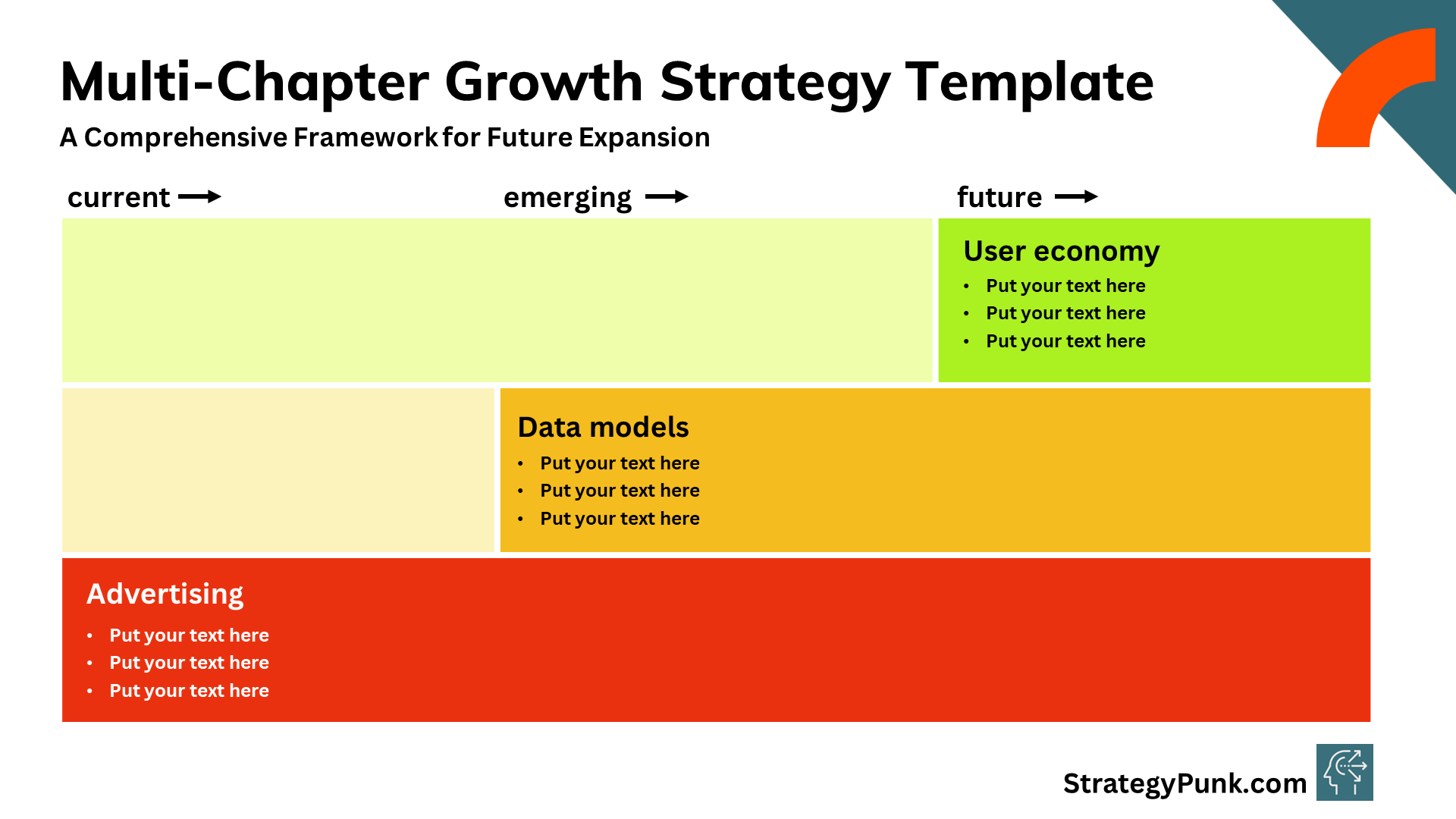Shaping Strategy Through Strategic Leadership Styles: A Blueprint for Success.
Dive into the art of strategic leadership and discover how to shape your strategy for industry success. This guide offers insights into mastering leadership styles, understanding industry trends, and effectively communicating your vision.

Introduction to Shaping Strategy Leadership Style
Are you looking to improve your leadership skills and shape your strategy for success? As a leader, it's crucial to constantly develop your skills and adapt to changes in your industry. Shaping your strategy leadership skills can help you stay ahead of the curve and achieve your goals.
One key aspect of shaping your strategy leadership skills is understanding your industry and the trends affecting it. By staying up-to-date on the latest developments in your field, you can make informed decisions and position your organization for success. You'll also need to be able to think critically and creatively, identifying opportunities and challenges and developing strategies to address them.
Another critical skill for shaping your strategy leadership is effective communication. As a leader, you must articulate your vision and business strategy and inspire your team to work towards them. You'll also need to be able to listen actively to feedback and ideas from your team and incorporate their perspectives into your strategy. With these skills, you can shape a successful strategy and lead your organization to achieve its full potential.
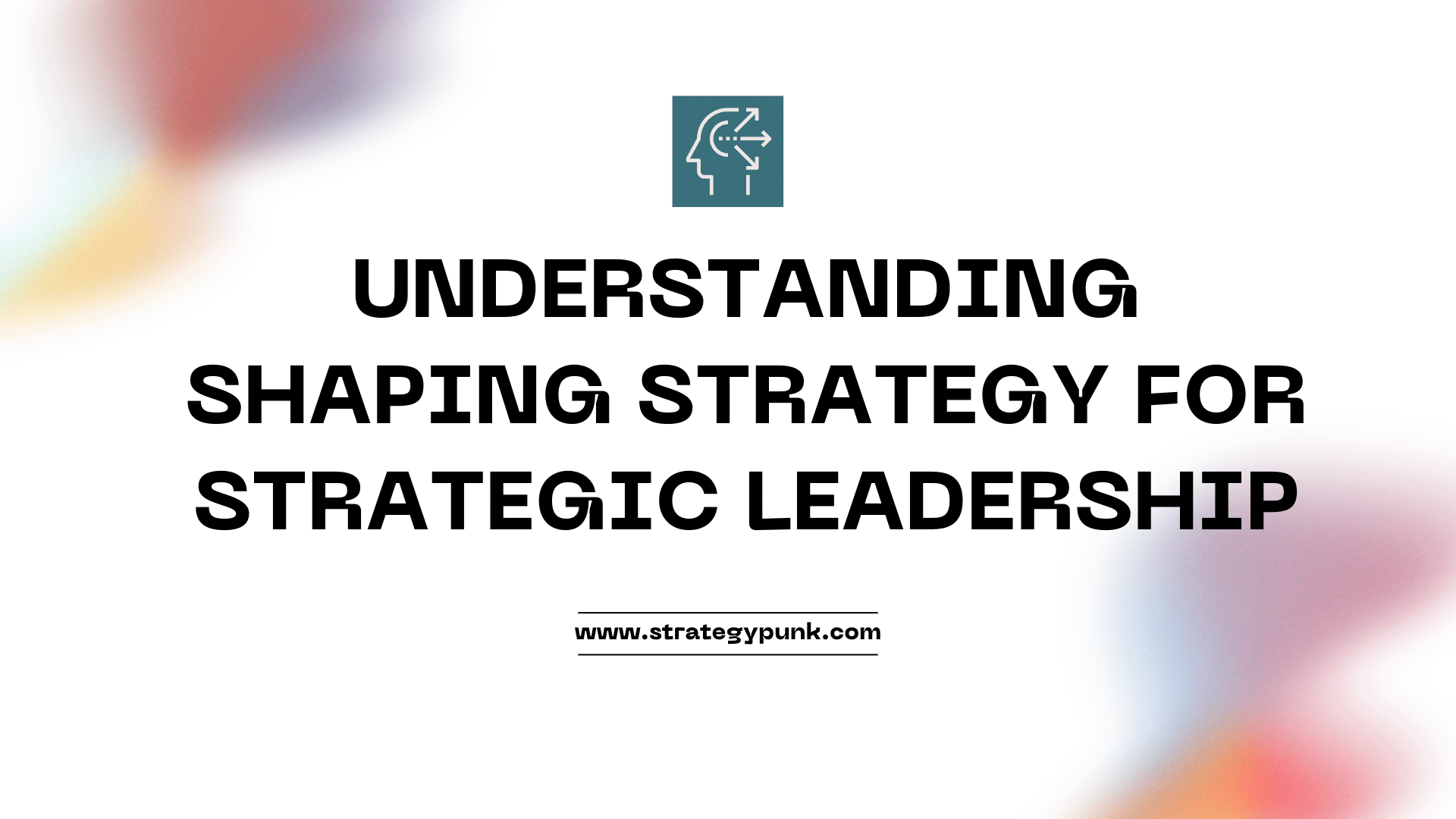
Understanding Shaping Strategy for Strategic Leadership
Shaping Strategy Meaning as a Strategic Leader
Shaping strategy is a leadership skill that involves creating a vision for an organization's future and taking the necessary steps to bring that vision to life. It is about setting goals and objectives, identifying challenges and opportunities, and developing a plan to achieve success.
To be effective, you must deeply understand your organization's strengths and weaknesses and the external factors that could impact its success. This includes market trends, customer needs, and competitor actions.
It requires strong communication skills; you must articulate your vision and motivate others to work towards it. This means listening to feedback, providing clear direction, and building solid stakeholder relationships.
Overall, shaping strategy is about taking a proactive approach to leadership and being willing to take risks and make bold decisions to achieve your goals. By understanding the meaning of shaping strategy and developing the skills to implement it effectively, you can help your organization thrive in a rapidly changing business landscape.
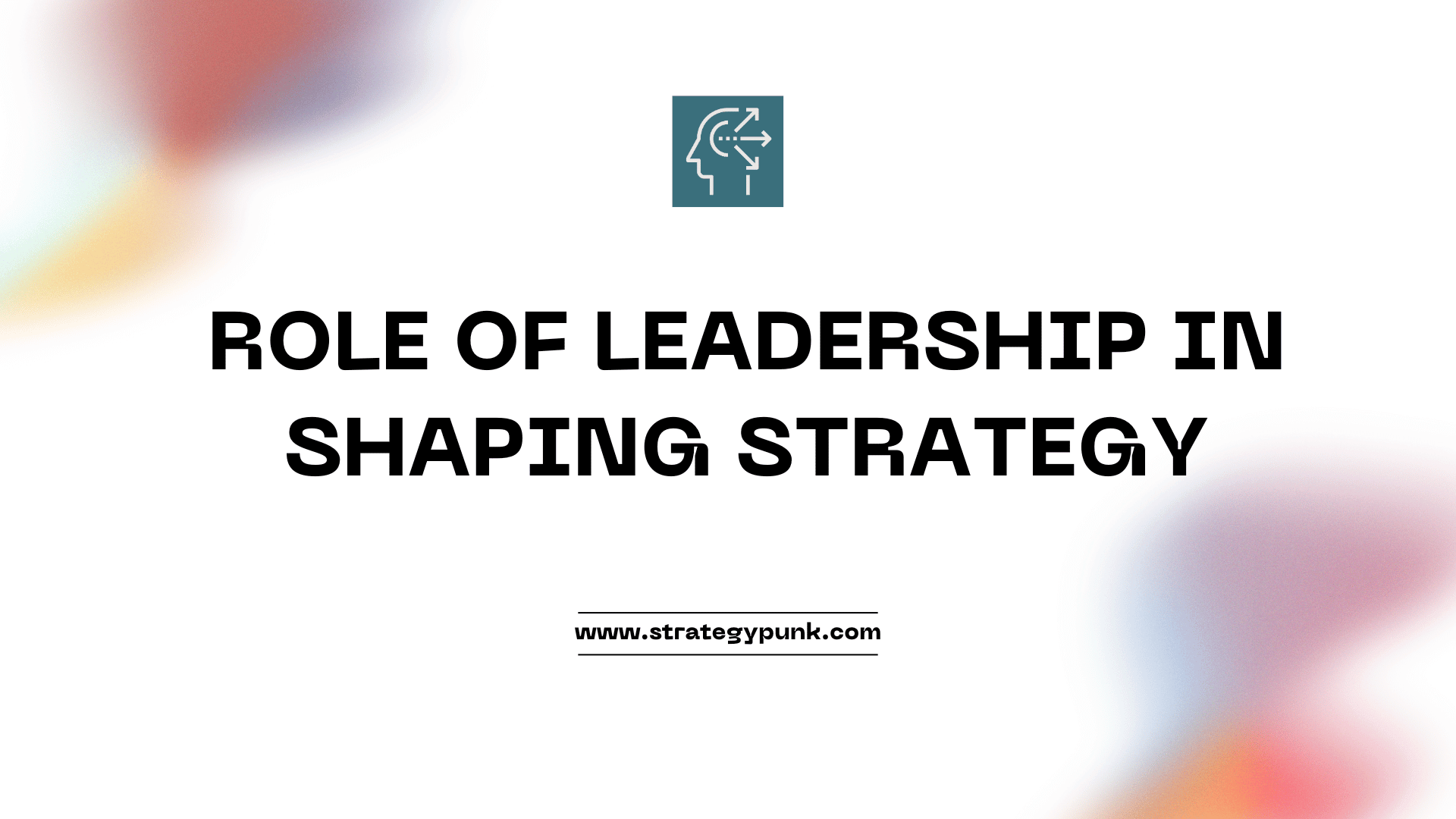
Role of Leadership in Shaping Strategy
Successful organizations have leaders who are skilled at shaping strategy. Developing and implementing effective strategies is critical to achieving long-term success. In this section, we will explore the role of leadership in shaping strategy, including examples of leadership skills and what differentiates leaders who are good at shaping strategy.
Shaping Strategy Leadership Skills Examples
Leaders who are effective at shaping strategy possess a variety of skills. Some examples include:
- Visionary thinking: Effective leaders can see the big picture and anticipate future trends and challenges.
- Analytical thinking: Leaders must be able to analyze data and information to make informed decisions.
- Communication: Leaders must be able to communicate their vision and strategy to others clearly and compellingly.
- Adaptability: Leaders must adapt to changing circumstances and adjust their strategy accordingly.
- Collaboration: Leaders must work effectively with others to achieve common goals.
What Differentiates Leaders Good at Shaping Strategy
Leaders who are good at shaping strategy possess certain qualities that set them apart. These include:
- Strategic mindset: Effective leaders have a strategic perspective and can think long-term.
- Courage: Leaders must have the courage to take risks and make difficult decisions.
- Creativity: Leaders must be creative and innovative in their approach to problem-solving.
- Emotional intelligence: Leaders must have emotional intelligence and be able to understand and manage their own emotions as well as the emotions of others.
- Continuous learning: Leaders must be committed to continuous learning and development.
To be successful at shaping strategy, leaders must possess a combination of these skills and qualities. By developing these skills and qualities, leaders can create and implement effective strategies that lead to long-term success for their organizations.
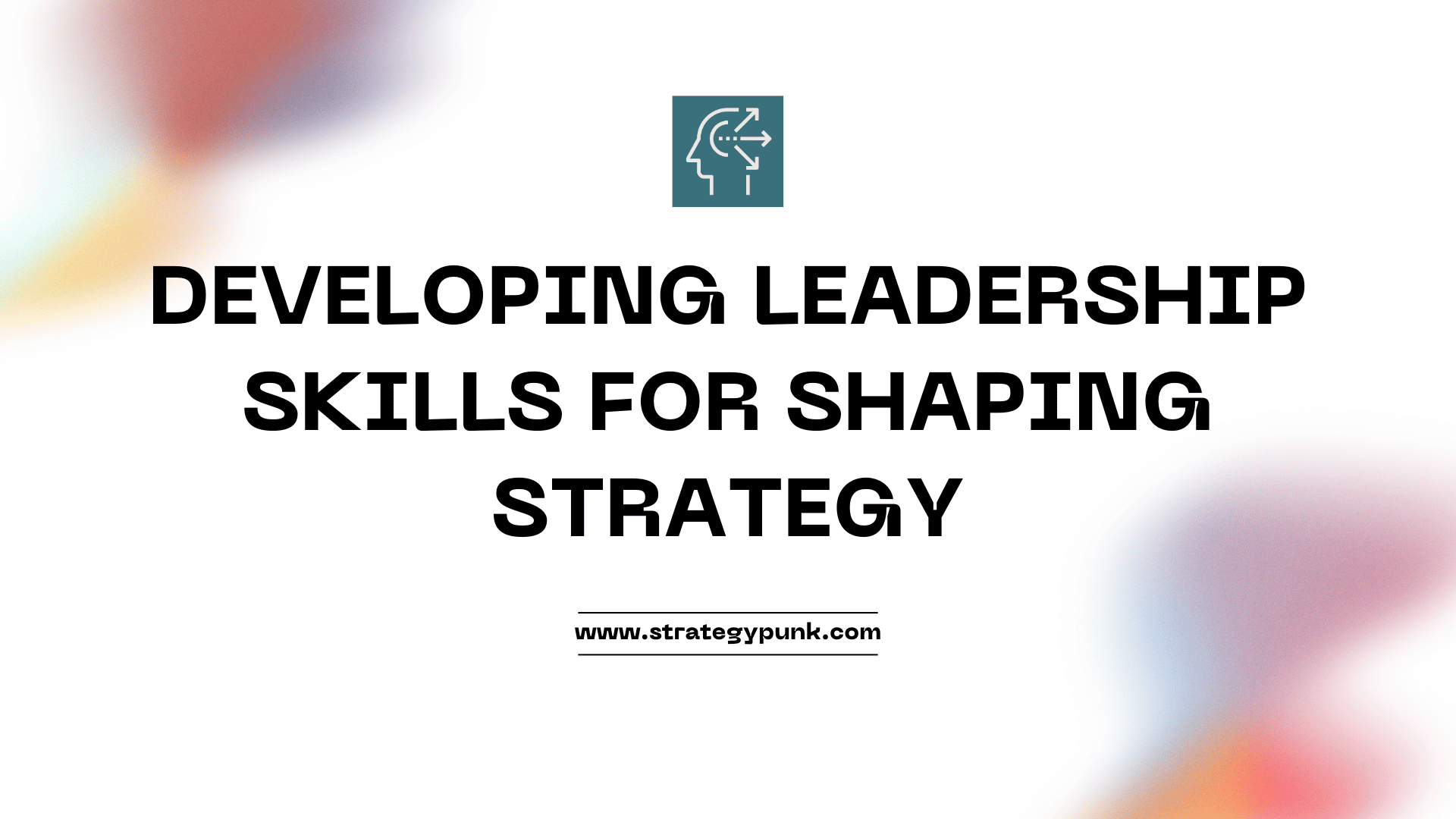
Developing Leadership Skills for Shaping Strategy
You need to create leadership skills to shape your strategy as a leader effectively. This involves building your ability to inspire and motivate teams, communicate effectively, and make sound decisions. Here are some key areas to focus on when developing your leadership skills:
Strategic Leadership Development Examples
A leadership development strategy can help you identify the skills and competencies you need to develop to become an effective leader. Here is an example of a leadership development strategy:
| Skill/Competency | Development Activity | Target Completion Date |
|---|---|---|
| Communication | Attend a public speaking course | December 2023 |
| Decision-making | Read "Thinking, Fast and Slow" by Daniel Kahneman | October 2023 |
| Team building | Attend a team building workshop | September 2023 |
| Strategic thinking | Attend a strategic planning course | November 2023 |
| Emotional intelligence | Take an EQ assessment and work with a coach | August 2023 |
By creating a plan like this, you can focus on developing the skills and competencies needed to become an effective leader.
In addition to a leadership development strategy, there are other ways to develop your leadership skills. For example, seeking feedback from your team and peers can help you identify areas for improvement. You can also seek mentorship or coaching from experienced leaders to gain insights and guidance on improving your leadership skills.
Remember, developing your leadership skills is an ongoing process. By continually seeking opportunities to learn and grow, you can confidently become a more effective leader and shape strategy for your organization.

Requirements for Using Shaping Strategy
What Are the Requirements for Using a Shaping Strategy?
To use a shaping strategy effectively, you must meet specific requirements to help you achieve your goals. Here are some of the essential requirements:
Clear Goals
Before shaping a strategy, you must know what you want to achieve. Your goals should be specific, measurable, achievable, relevant, and time-bound (SMART). This will help you focus your efforts and measure your progress.
Flexibility
Shaping strategy requires flexibility. It would be best if you could adapt your approach as circumstances change. This means being open to new ideas, feedback, and different perspectives.
Collaboration
Shaping strategy requires collaboration. It would be best if you worked with others to achieve your goals. This means building relationships, communicating effectively, and working towards shared objectives.
Influence
Shaping strategy requires force. You need to be able to persuade others to support your goals. This means understanding their needs and motivations and compellingly presenting your ideas.
Strategic Thinking
Shaping strategy requires strategic thinking. You need to be able to see the big picture, identify trends and patterns, and anticipate future developments. This means being proactive, creative, and innovative in your approach.
By meeting these requirements, you can use a shaping strategy to achieve your goals and lead your team to success.

Shaping Strategy in the Context of Business Disruption
Shaping Strategy: Which Leadership Skills Help Most?
To shape a strategy, an executive must possess specific skills to create a plan that aligns with the organization's goals and objectives. Some of the most essential leadership skills that help in shaping strategy include:
- Visionary thinking: The ability to think beyond the present and envision a future that aligns with the organization's goals.
- Analytical skills: The ability to analyze data, identify patterns, and make informed decisions based on the available information.
- Collaboration: Working with others and building consensus around a common goal.
- Communication: The ability to clearly and effectively articulate a vision and strategy to stakeholders.
- Adaptability: The ability to adjust the strategy based on changing circumstances.
Shaping Business in a World of Constant Disruption
In today's fast-paced business environment, leaders must be able to shape strategy in the face of constant disruption. To do so, they must be agile and adaptable, able to pivot quickly in response to changing circumstances. Some strategies in a disrupted world include:
- Scenario planning: Creating multiple scenarios based on different possible outcomes and developing strategies that can be adapted to each system.
- Continuous learning: Staying up-to-date with the latest trends and developments in the industry and using that knowledge to shape strategy.
- Collaboration: Working with stakeholders to identify emerging trends and opportunities and shape strategy accordingly.
Shaping a High-Performing Strategy - What, When, How
To shape strategy effectively, leaders must understand what strategy is, when to use it, and how to implement it. Strategy is a plan of action to achieve a specific goal or objective. It should be used when an organization needs to achieve a particular outcome, such as entering a new market, improving operational efficiency, or increasing revenue. To implement a strategy effectively, leaders must:
- Identify the goal: Could you clearly define the goal or objective the strategy aims to achieve?
- Analyze the situation: Conduct a thorough analysis of the internal and external factors that could impact the strategy's success.
- Develop a plan: A detailed plan outlines the steps required to achieve the goal.
- Execute the plan: Please ensure the strategy is on track to achieve the desired outcome.
Leaders can create plans that align with their organization's goals and objectives and drive success by developing the necessary leadership skills, understanding how to shape strategy in a disrupted world, and knowing what, when, and how to implement a system.
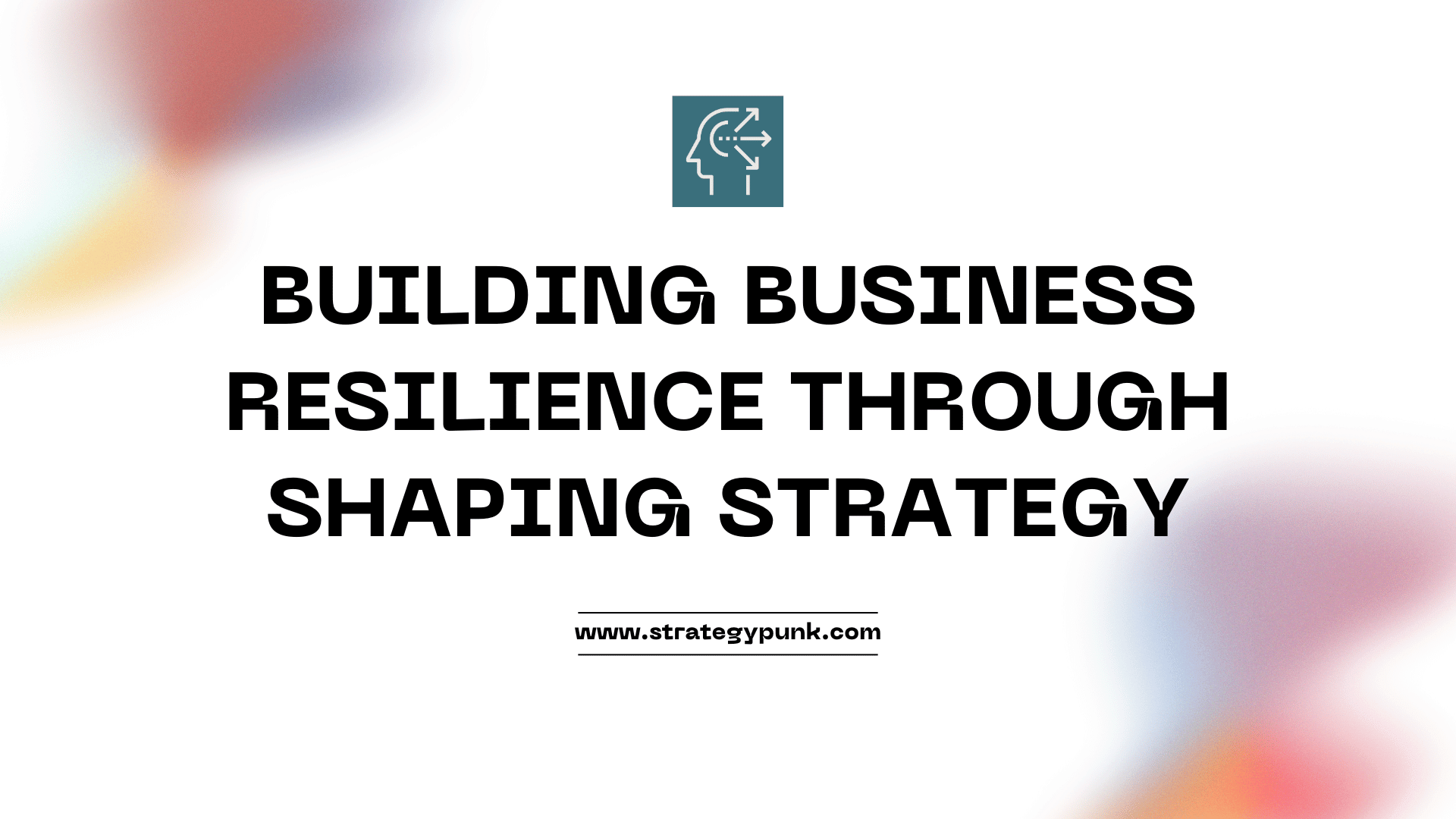
Building Business Resilience Through Shaping Strategy
As a leader, one of the most important skills you can develop is the ability to shape strategy to build business resilience. By doing so, you can help your organization weather the storms of economic uncertainty, market volatility, and unforeseen challenges that arise.
Business Resilience Insight
Business resilience refers to an organization's ability to adapt, recover, and thrive in adversity. This requires a strategic approach focusing on building strength into the organization's fabric, from its culture and processes to its systems and infrastructure.
To build business resilience, you need to take a holistic approach that encompasses the following elements:
- Risk Management: Identify and mitigate risks that could impact your organization's ability to operate effectively.
- Business Continuity: Develop plans and processes that ensure your organization can continue functioning in the face of disruptions.
- Crisis Management: Prepare for and respond to crises in a way that minimizes their impact on your organization.
- Innovation: Foster a culture of innovation that enables your organization to adapt and evolve in response to changing circumstances.
By focusing on these elements, you can build a more resilient organization better equipped to handle whatever challenges come its way.
To shape your organization's strategy for building business resilience, you should consider the following steps:
- Assess Your Current State: Could you examine your organization's resilience, strengths, and weaknesses?
- Set Objectives: Define clear objectives for building resilience based on your assessment and your organization's needs.
- Develop a Strategy: Develop a strategy that outlines the steps you will take to achieve your objectives, including specific initiatives and action plans.
- Implement and Monitor: Implement your strategy and monitor its effectiveness, making adjustments as needed to ensure that you are making progress toward your objectives.
By following these steps, you can build a more resilient organization better prepared to face the challenges of today's rapidly changing business landscape.

Shaping Strategy for Future Growth
Build for the Future
It would be best if you focused on building for the future to shape a strategy for future growth. This means you must proactively identify the trends and changes that will likely impact your organization in the coming years. It would be best if you were willing to take risks and invest in new technologies and processes to help you stay ahead of the competition.
Investing in research and development is one way to build for the future. This can involve developing new products and services that meet the changing needs of your customers. It would be best if you also explored new markets and geographies, as well as new distribution channels and partnerships.
Investing in your people is another crucial aspect of building for the future. This means providing training and development opportunities to help your employees acquire new skills and knowledge. It would be best if you were willing to empower your employees and give them the freedom to experiment and innovate.
In addition to investing in research and development and your people, you should also be willing to embrace change. This means being open to new ideas and approaches and adapting your strategy as circumstances change. It would be best if you were willing to take calculated risks and learn from your failures.
By building for the future, you can shape a strategy that will help you achieve long-term growth and success. This requires a willingness to take risks, invest in new technologies and processes, and embrace change. It also requires a commitment to your people and a desire to empower them to innovate and experiment.
FAQs
Frequently Asked Questions
Frequently Asked Questions
What differentiates leaders from good at shaping strategy?
Leaders who are good at shaping fundamental strategies have unique skills. They are good at analyzing data, identifying trends, and anticipating changes in the market. They are also good at communicating their vision and inspiring their team to work towards a common goal.
What are some fundamental principles of shaping strategy?
Some fundamental tenets of shaping strategy include understanding your organization's strengths and weaknesses, analyzing the market and competitors, and identifying growth opportunities. Strategic leaders understand having a clear vision and communicating it effectively to your team is also essential.
How can shaping strategy be applied in special education?
The shaping method can be used in special education by identifying the unique needs of students with disabilities, analyzing available resources, and developing a plan to meet those needs. This can involve working with teachers, parents, and other professionals in the ecosystem to create individualized education plans and ensure students receive the support they need to succeed.
What are some characteristics of influential strategic leaders?
Strategy needs are analyzing data, identifying trends, and anticipating changes in the market. They are also good at communicating their vision and inspiring their team to work towards a common goal. They are adaptable, flexible, and able to make decisions quickly.
How can strategic leadership skills be developed?
Strategic leadership skills can be acquired through education, training, and experience. It's essential to stay up-to-date on industry trends and best practices and seek out opportunities for mentorship and coaching.
What are some common challenges faced by strategic leaders?
Common challenges include managing change, dealing with uncertainty, and balancing short-term and long-term goals. It's essential to be adaptable and flexible and to communicate effectively with your team to ensure everyone is on the same page.
What are some examples of successful strategic leadership in business?
Some examples of successful strategic leadership in the industry include Apple's Steve Jobs, who transformed the company from a struggling computer manufacturer to a global technology leader, and Amazon's Jeff Bezos, who revolutionized the retail industry with his innovative approach to e-commerce.
Additional Resources
Strategy to Success: Unleashing the 7 Crucial Leadership Skills (Free Template)
Explore the '7 Crucial Leadership Skills' that define influential leaders. This in-depth guide empowers you with practical tips on strategy, recruiting, decision-making, and more. Download our free PDF template.
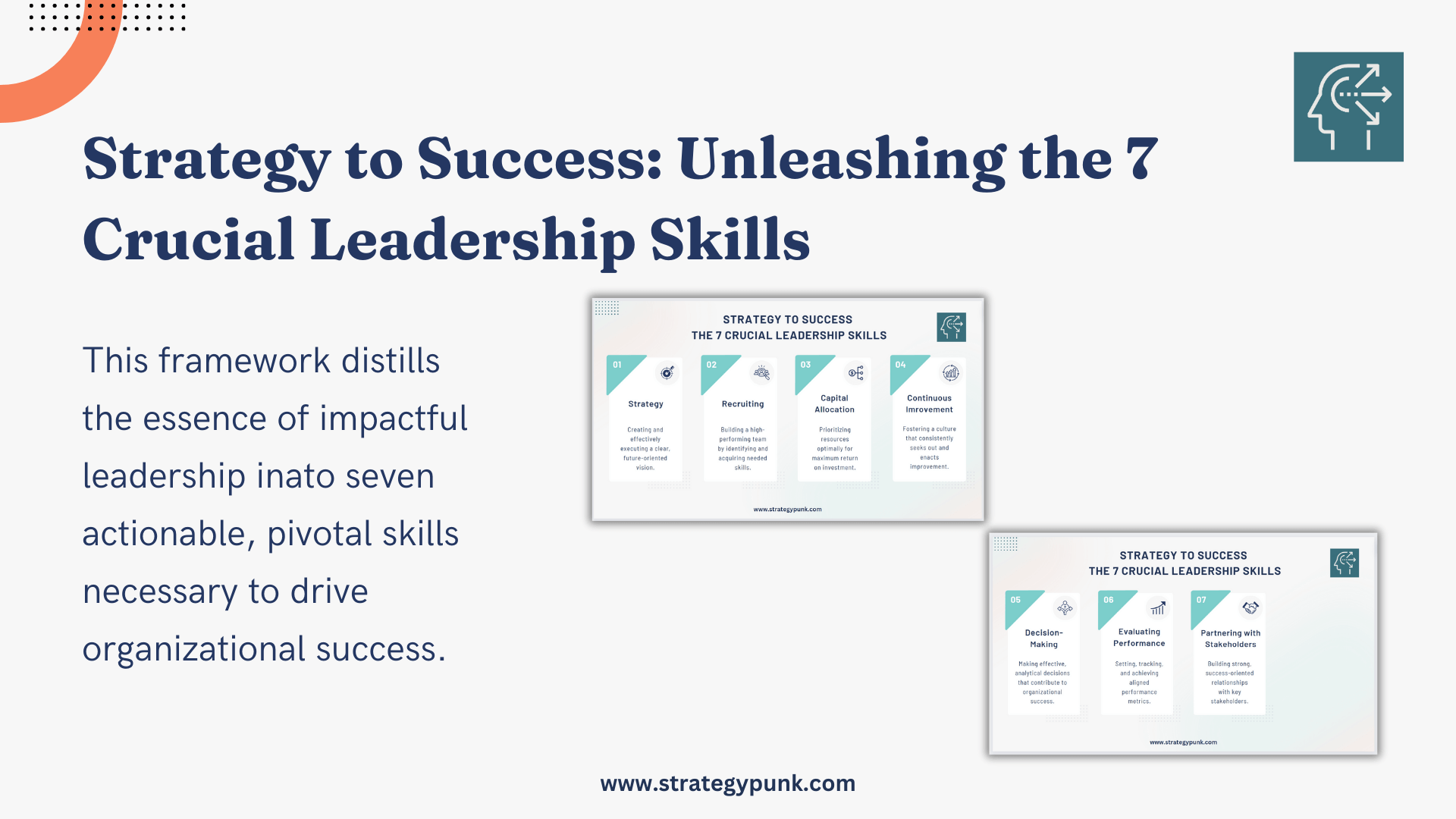
Stepping into a Leadership Role: What To Do When You Don't Know Where to Start
Engaging in these practices, lowers your chances of failing as you step into your new leadership role.
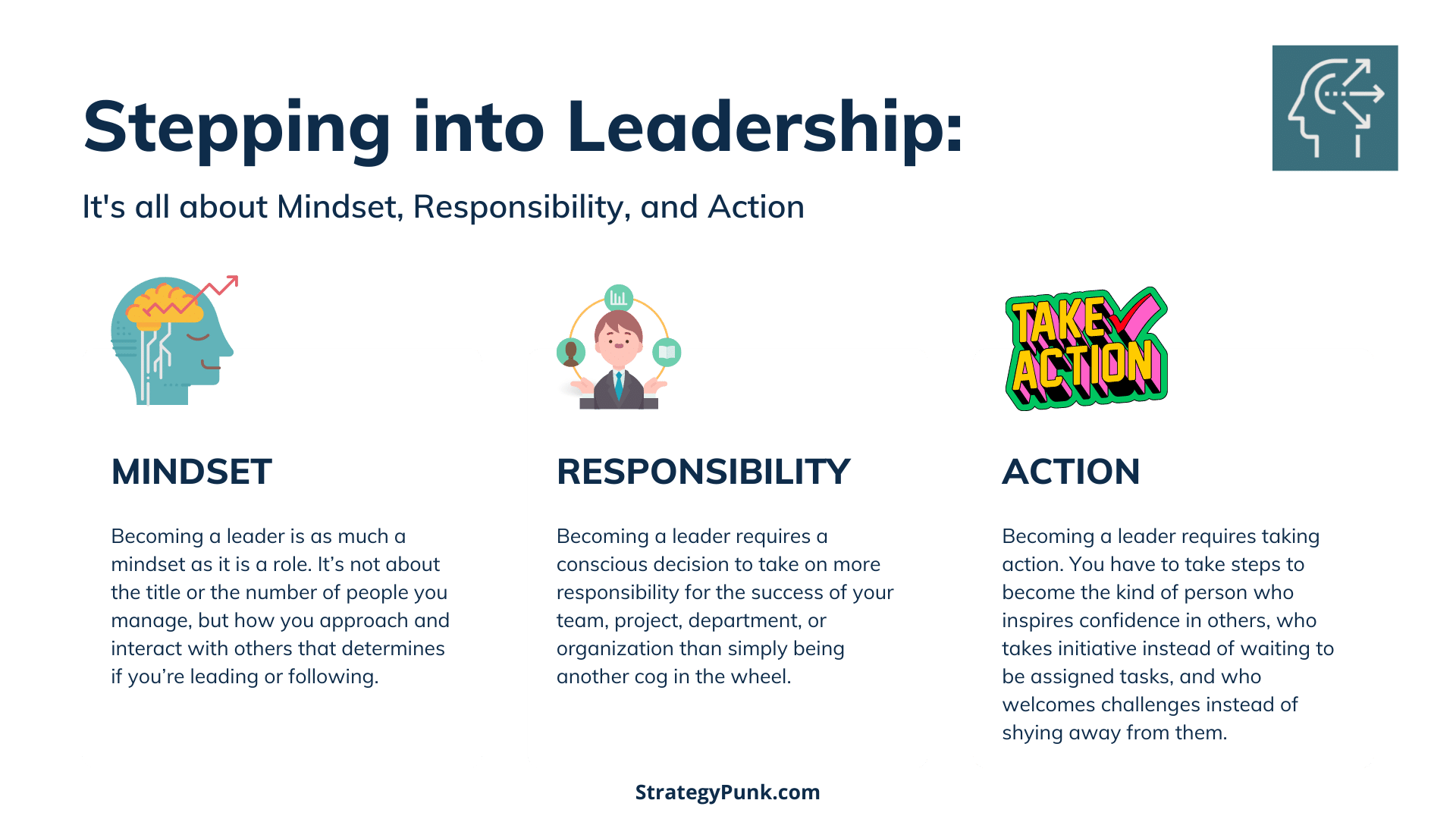
2023 Business Disruption: Navigating Growth Through Shaping Strategy
Please discover the importance of being a shaper in 2023's business ecosystem, shaping strategy, attracting a critical mass of participants, and finding the right strategic path to create value.

5 C's of Leadership by Indra Nooyi
The 5 C's of Leadership by Indra Nooyi: Introduction to the leadership style of Indra Nooyi, following her 5 C's: Competency, Courage and Confidence, Communication, Consistency, and Compass.
